Image: Spanish influenced buildings on the Island of Flores
doce dia (martes, el seite de febrero)
4:14 am and I pack my bags and head downstairs to meet the rest our group.
My trip to Guatemala came about because Laurel had travelled to Nicaragua last year with an Ontario-based charitable organization called Horizons of Friendship that sponsors projects in Mexico and Central America. This year Horizons is touring projects in Guatemala and I convinced Laurel that we should go. A trip to Guatemala in 2013 fell through after I had bought air tickets and I hadn’t forgotten that desire.
We pile into the shuttle and reach the airport. Patricia, tour leader and Horizons staff person, asks the group – 8 others to hand our passports to her. I was regretting giving up my autonomy and subject myself to be herded along as part of a tour group. As we wait for our flight to be announced, I chide myself for signing up with a choreographed tour with a bunch of folks 20 years older than me? What could we have in common? These guys seem barely awake and I decide I am going to retreat into my cozy anti-social shell and make the most of my time working on my espanol. Well, that resolution lasted for 90 minutes. We get off the flight and on to the tarmac and I am immediately befriended by Garnet from Red Deer. He wants to know if I was from India and starts telling me about his trip to my native country the year before. A few minutes later, Neil introduces himself and asks why we hadn’t travelled with the rest of the group from Toronto the previous day. I didn’t hold back about our Spanish school and Neil urges me to tell his wife Marilyn, who was working on her Spanish using an App called DuoLingo (which I had been using as well.) My anti-social shell was disintegrating with little effort.
We arrive at a cute hotel on an island called Isle de Flores on the shores of Lago Peden Itza. It’s convenient and modern but yet has enough character and quaintness for me to feel comfortable in this setting.
At breakfast, I discover more commonalities with the group. After 15 minutes of bad mouthing Trump, Garnet peps up, “Are we going to spend the rest of our tour attacking Trump?” He went on to say, “I believe all we can do is look after the yard in front of us and if everyone did that, the world would be a better place.” I didn’t need much convincing to sign up for Garnet’s philosophy. I find myself avoiding idle gossip or worrying, else I feel powerless and frustrated.
Following breakfast, we’re on our way to San Andreas and San Jose, two communities on the shores of Lake Peden Itza. Magically, our shuttle driver has found us a Mayan guide for half a day. David is young and doesn’t speak English. He briefs us on the history of the Lake. San Jose was one of the last Mayan communities to fall to the Spaniards because the Mayan Itza people were warriors. It had taken five attempts to be conquered. David left us with an image of a red blood-filled lake following the encounters in late 1490s. Many locals claim to see a tall dark entity on the lake that the call El Negro or The Black One and believe it protects the lake.
David then took us to the Catholic Church in San Jose and showed us three skulls in a glass display case. Every year, on November 1, the Day of the Dead, the community takes a procession with the human skulls. The story behind the parade and skulls goes back to pre-Christian times. There had been 12 skulls belonging to different Mayan kings, queens and leaders. When the Church came into the community, it appropriated the skulls and some of the Mayan customs to draw in the locals. Nine of the skulls were destroyed as both the skulls and the custom was considered demonic or pagan. The Mayans believe that for 40 days preceding November 1, spirits descend from the mountains to partake in the procession.
We walk from the Church to meet Dona Irma, a petite 71-year old Mayan elder. Irma has started a women’s organization to preserve Mayan knowledge of traditional plants and their uses. While the group was managing to educate and use the plants, Irma said they initially had trouble with production. That’s when they accepted the assistance of an American woman who helps them with growing and processing the plants to create shampoos, soaps, creams and products for various ailments. She tells how it was difficult in the beginning to convince the younger people to participate but once they experience the results of traditional plants, they bought in. Irma confirms for me what I had begun to understand since my visits to Kerala (where Ayurveda is a strong healing tradition) and my exposure to use of indigenous plants by natives in Canada. That nature has provided every region with abundant and unique plants and herbs for food and medicine. Human don’t need to re-invent what Mother Nature already provides! Irma’s relationship with her American counterpart also affirms the value of partnership and adapting to change without losing sight of the values and traditions we want to retain and why!
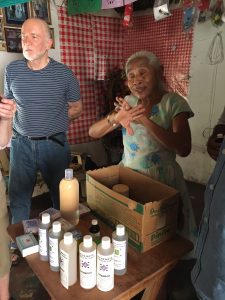
We go on to another sacred Mayan ceremonial site that David’s family has reclaimed. In 2004, David’s family consecrated a site on a small hill overlooking the lake for David to get married. He brought in a Mayan elder from Chichicastenango eight days prior to prepare the site and conduct the wedding. Before the elder came, he had told David that he had never been to this region. However, once they touch the touched the shores of Lake Peden Itza, the elder proclaimed, “I know this place.” David told us that many spirits are believed to come to purify themselves in the Lake and the elder remembered doing the same. One of my group members Geraldine asks permission to offer some tobacco at the site. David responds, “If your heart tells you it’s ok, go ahead.”
Our morning trip was completed by a beautiful lunch made by a women’s collective that had formed for social reasons and who work the land to grow food for themselves and to sell. It was a gorgeous meal in the backyard of the group’s home with cute kids biking around the property.
When I asked how Horizons had managed to track down David and find this special place for a local meal, Daniel, the other Horizons staff person, told me it had come together by accident when the normal English-speaking guide was unavailable and the driver had suggested David.
I felt blessed and lucky to meet David, Irma and eat a meal prepared by the women’s group!
The seniors need a siesta and I am glad for unstructured lone time during which I work on my Spanish sitting in the patio overlooking the serene lake.
Laurel and I walk around the island and take in the colonial style architecture – another mark left by the Spanish, although much more harmless.
We end the day with a lovely dinner and come across this sign next door that ends our day with a smile!


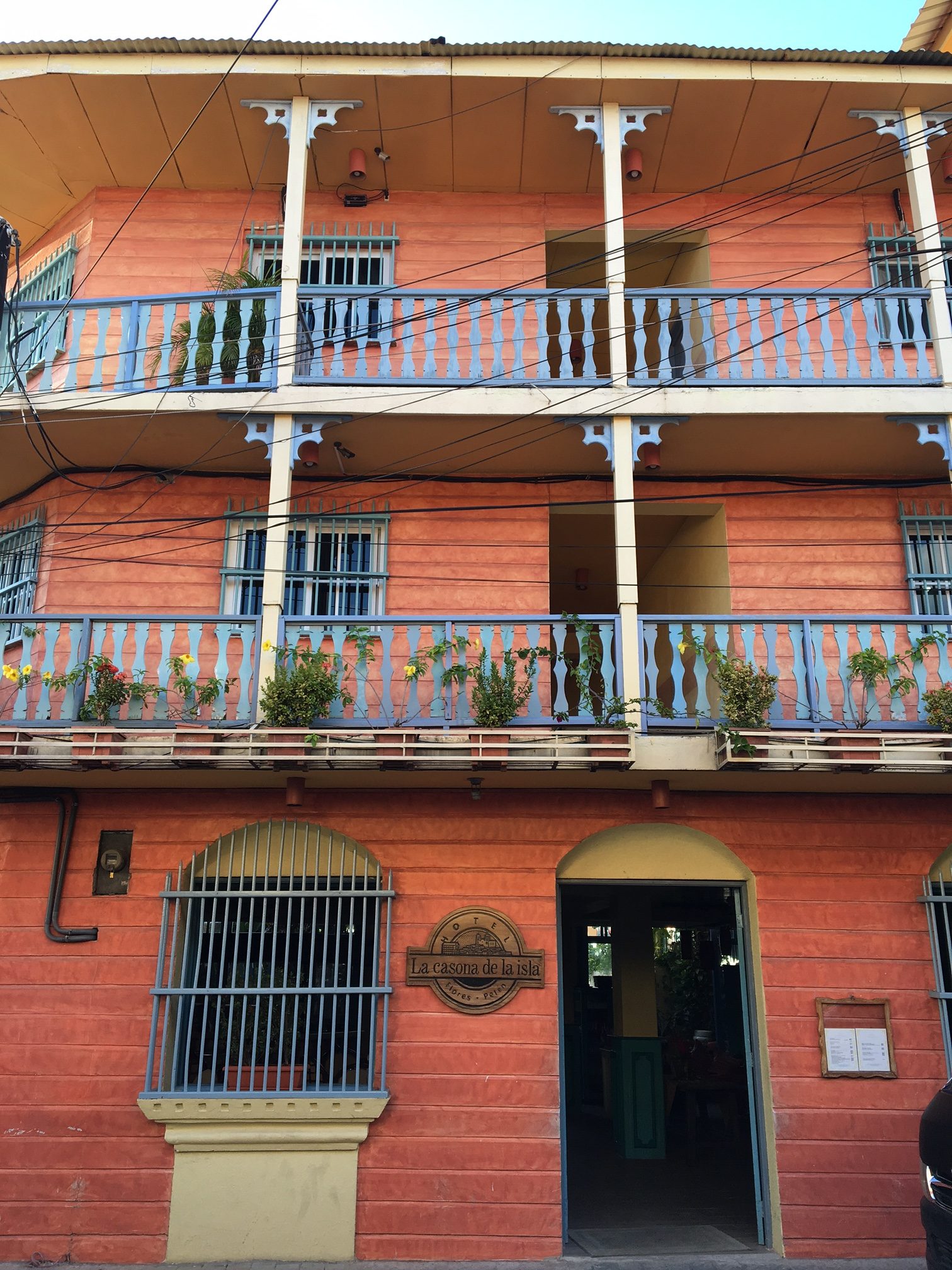
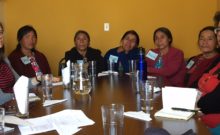
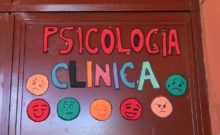
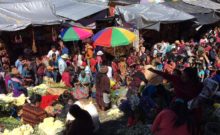
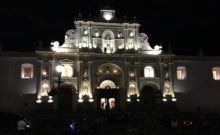
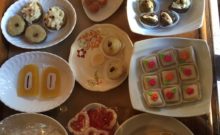
Leave a Comment